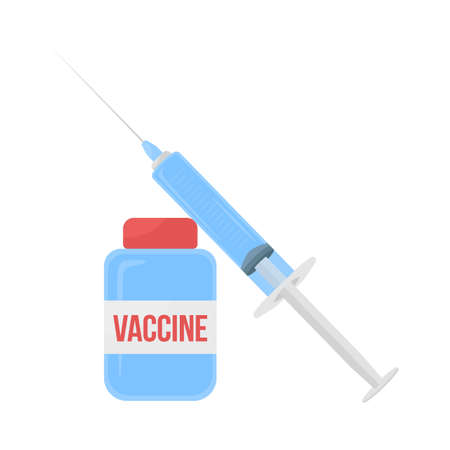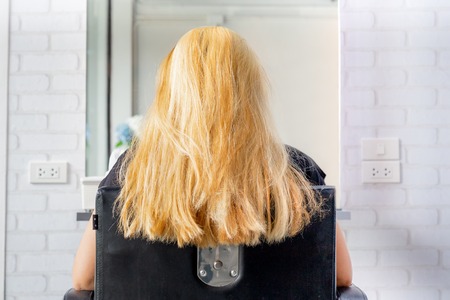1. Understanding the Connection Between Iron and Hair Health
When it comes to keeping your hair strong, full, and healthy, iron plays a bigger role than most people realize. Iron is an essential mineral that helps carry oxygen through your blood to all parts of your body—including your scalp and hair follicles. Without enough iron, your hair can become weak, brittle, and may even start to fall out.
Why Iron Matters for Hair Growth
Your hair follicles are among the most rapidly growing cells in your body. To support this fast growth, they need a steady supply of oxygen and nutrients. Iron helps produce hemoglobin, a protein in red blood cells that delivers oxygen. If your body is low on iron, it cant carry enough oxygen to the scalp, which can slow down or stop hair growth altogether.
Key Functions of Iron in Hair Health
| Function | How It Supports Hair |
|---|---|
| Oxygen Transport | Delivers oxygen to hair follicles for healthy growth |
| Energy Production | Supports the energy needs of rapidly dividing hair cells |
| Cell Regeneration | Aids in creating new hair strands and maintaining follicle health |
Signs That Low Iron Might Be Affecting Your Hair
If youre experiencing more shedding than usual or noticing thinning along your part or temples, low iron could be a contributing factor. Other common symptoms include fatigue, pale skin, cold hands and feet, or frequent headaches. These signs may indicate iron deficiency anemia—a condition known to impact hair health.
Common Symptoms of Iron Deficiency That Can Impact Hair:
- Increased hair shedding during brushing or washing
- Visible thinning at the crown or sides of the scalp
- Brittle or dry hair texture
- Slower than normal regrowth after shedding
Who’s at Risk for Low Iron Levels?
Certain groups are more likely to experience iron deficiency. Women of childbearing age, especially those with heavy periods, vegetarians or vegans who don’t get enough iron-rich foods, and individuals with digestive conditions like celiac disease may all be at higher risk.
Ironic But True: Not All Iron Is Created Equal
Your body absorbs iron from animal sources (heme iron) more easily than from plant sources (non-heme iron). That means diet matters when it comes to preventing hair loss related to low iron levels.
| Iron Source | Type of Iron | Absorption Rate |
|---|---|---|
| Red meat, poultry, fish | Heme Iron | High absorption |
| Lentils, beans, spinach | Non-Heme Iron | Lower absorption (can improve with Vitamin C) |
The connection between iron and hair health is clear: without enough iron, your scalp and follicles cant function properly. This can lead to slower growth and increased shedding over time.
2. How Iron Deficiency Contributes to Hair Thinning and Shedding
Iron plays a major role in keeping your hair strong and healthy. When your body doesn’t have enough iron, it struggles to produce hemoglobin—a protein in red blood cells that carries oxygen to your tissues, including the hair follicles. Without enough oxygen, your hair follicles can become weak, leading to thinning and excessive shedding.
Why Iron Matters for Hair Health
Your hair follicles are among the most active cells in your body. They need a steady supply of nutrients and oxygen to function properly. Iron helps deliver these essentials through your bloodstream. When iron levels drop, the follicles may enter a resting phase (called telogen), which means they stop producing new hairs and eventually shed existing ones.
Common Symptoms of Low Iron Levels
If youre experiencing unusual hair loss or thinning, low iron could be a hidden cause. Here are some common signs to watch for:
| Symptom | Description |
|---|---|
| Increased hair shedding | More strands than usual on your brush, pillow, or shower drain |
| Thinning hair | A noticeable reduction in hair volume, especially at the crown or part line |
| Pale skin or fatigue | General tiredness and pale complexion caused by reduced oxygen flow |
| Brittle nails | Nails that break easily can also be linked to low iron levels |
Warning Signs You Shouldnt Ignore
If you notice persistent hair loss along with symptoms like dizziness, cold hands and feet, or shortness of breath, it’s a good idea to get your iron levels checked. These could be signs of iron deficiency anemia—a more serious condition that needs medical attention.
Tip:
Women are especially at risk due to menstruation and pregnancy. If you follow a vegetarian or vegan diet, or have digestive issues that affect nutrient absorption, youre also more likely to experience low iron levels.
Bottom Line
Iron is essential not just for your overall health but also for maintaining full, healthy-looking hair. If youre dealing with unexplained thinning or shedding, checking your iron status might be a smart first step.

3. Key Sources of Iron for Optimal Hair Growth
Iron plays a vital role in supporting healthy hair growth and preventing thinning and shedding. When your body doesnt get enough iron, it can lead to a drop in oxygen supply to your hair follicles, slowing down their growth cycle and causing more strands to fall out than usual. The good news? You can boost your iron levels through both food and supplements. Here’s how.
Dietary Sources of Iron
Eating a balanced diet rich in iron is one of the most effective ways to maintain healthy hair. There are two types of dietary iron: heme and non-heme iron. Heme iron, found in animal-based foods, is more easily absorbed by the body. Non-heme iron comes from plant-based sources and is slightly less bioavailable but still beneficial—especially when paired with vitamin C-rich foods, which enhance absorption.
Top Iron-Rich Foods
| Food Source | Type of Iron | Serving Size | Approx. Iron Content |
|---|---|---|---|
| Beef (lean cuts) | Heme | 3 oz (85g) | 2.1 mg |
| Chicken liver | Heme | 3 oz (85g) | 9.9 mg |
| Spinach (cooked) | Non-heme | ½ cup | 3.2 mg |
| Lentils (cooked) | Non-heme | 1 cup | 6.6 mg |
| Tofu | Non-heme | ½ cup | 3.4 mg |
| Fortified breakfast cereals | Non-heme (fortified) | 1 serving | Up to 18 mg |
| Pumpkin seeds | Non-heme | 1 oz (28g) | 2.5 mg |
Iron Supplements for Hair Health
If your diet alone isn’t providing enough iron—or if you have an iron deficiency diagnosed by your doctor—supplements may help fill the gap. There are several types of iron supplements available over-the-counter or by prescription, including ferrous sulfate, ferrous gluconate, and ferrous fumarate.
A Few Tips When Taking Iron Supplements:
- Take them on an empty stomach for better absorption—but if that causes nausea, try taking them with a small meal.
- Avoid taking them with calcium-rich foods or drinks like milk, as calcium can interfere with absorption.
- Add vitamin C (like a glass of orange juice) to boost absorption naturally.
- If youre unsure about dosage or type, talk to your healthcare provider before starting any supplement regimen.
Please Note:
You should only take iron supplements if advised by a medical professional, especially since too much iron can be harmful. Routine blood tests can determine whether youre low on iron and help guide your treatment plan for healthier hair.
4. Best Practices for Improving Iron Absorption
If youre trying to boost your iron levels to help with hair thinning and shedding, its not just about what you eat—but how you eat it. Your body needs the right conditions to absorb iron effectively. Here are some simple ways to make sure youre getting the most out of your iron-rich foods.
Pair Iron with Vitamin C
Vitamin C helps your body absorb non-heme iron (the kind found in plant-based foods) more efficiently. Try combining iron-rich foods like spinach or lentils with vitamin C sources like oranges, strawberries, or bell peppers.
Examples of Smart Food Pairings:
| Iron-Rich Food | Vitamin C Booster |
|---|---|
| Lentils | Tomato slices or orange wedges |
| Spinach | Lemon juice or red bell peppers |
| Oatmeal | Berries or kiwi |
Avoid Iron Blockers Around Mealtime
Certain foods and drinks can interfere with iron absorption if consumed at the same time as your meals. Try to limit these within an hour before and after eating iron-rich foods:
- Coffee and tea: Both contain polyphenols that can reduce iron absorption.
- Dairy products: High in calcium, which competes with iron in your digestive system.
- Soy products: Contain compounds called phytates that can bind to iron and block its uptake.
Add More Heme Iron Sources
Your body absorbs heme iron—found in animal-based foods—more easily than non-heme iron from plant sources. If youre not vegetarian, adding moderate amounts of lean meats like chicken, turkey, or beef can help support healthy iron levels.
Cook with Cast Iron Cookware
This old-school kitchen trick actually works! Cooking acidic foods (like tomato sauce) in cast iron pans can boost their iron content naturally.
Create a Balanced Eating Routine
Your body likes consistency. Skipping meals or crash dieting can reduce nutrient intake, including essential minerals like iron. Aim for balanced meals throughout the day to keep both your energy and nutrient levels steady—which is great for hair health, too!
A Quick Reminder:
- If you suspect low iron is affecting your hair, talk to a healthcare provider before starting any supplements.
Tweaking your daily habits just a little can make a big difference in how well your body absorbs iron—helping you support thicker, healthier hair from the inside out.
5. When to Consult a Doctor About Iron Deficiency and Hair Loss
If youre experiencing ongoing hair thinning or shedding that doesn’t improve with over-the-counter supplements or diet changes, it might be time to speak with a healthcare provider. Iron plays a key role in healthy hair growth, and low iron levels—especially in women—can contribute to noticeable hair loss.
Signs You Should See a Doctor
Sometimes its hard to tell if your hair loss is due to iron deficiency or something else. Here are some signs that its worth checking in with your doctor:
| Symptom | Why It Matters |
|---|---|
| Hair shedding that lasts more than 3 months | This could be a sign of chronic telogen effluvium, which may be linked to low iron levels. |
| Noticeable thinning at the crown or part line | Patterned hair thinning can sometimes be worsened by iron deficiency anemia. |
| Fatigue, pale skin, or shortness of breath | These are common symptoms of iron deficiency anemia and should not be ignored. |
| Brittle nails or frequent headaches | These may also point to low iron levels affecting overall health. |
What to Expect During Your Visit
Your doctor will likely ask about your medical history, diet, menstrual cycle (if applicable), and any other symptoms you’re experiencing. A simple blood test called a ferritin test can check your stored iron levels. If they’re low, your doctor might recommend iron supplements or investigate other causes of the deficiency.
Important Lab Tests for Iron-Related Hair Loss
| Test Name | Purpose |
|---|---|
| Ferritin | Measures stored iron; low levels often correlate with hair loss. |
| Complete Blood Count (CBC) | Checks for anemia and overall blood health. |
| Total Iron Binding Capacity (TIBC) | Helps evaluate how well your body transports iron. |
Tip:
If youre already taking an iron supplement but still noticing hair loss, don’t self-adjust your dose without speaking to a doctor—it could do more harm than good.
